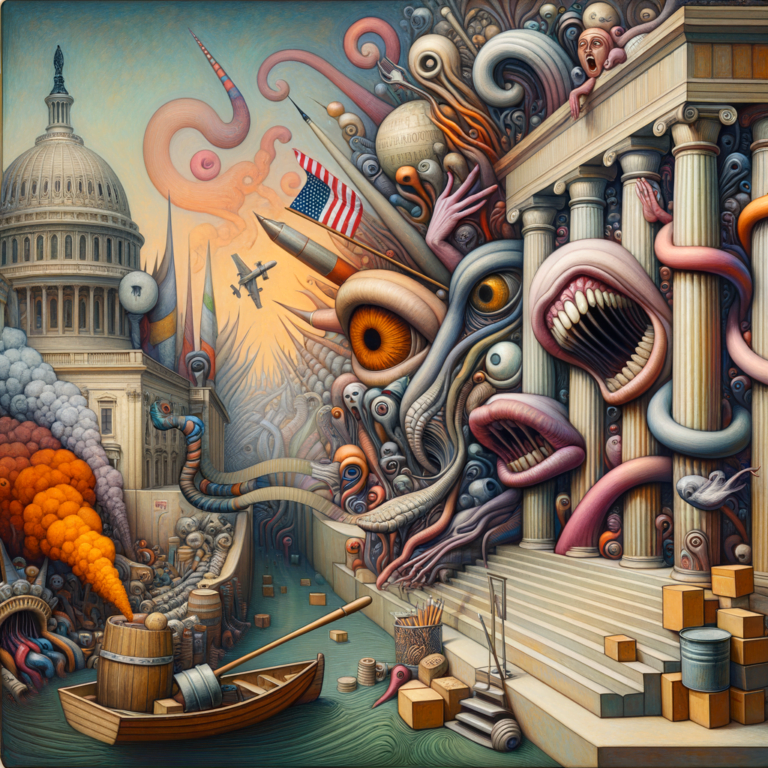Table of Contents
The US Government Shutdown: A Political Standoff
Imagine a scenario where the government of a country comes to a grinding halt. No services are being provided, federal employees are not getting paid, and essential programs are suspended. This is what happens during a government shutdown, a situation that can have far-reaching consequences on the economy and the lives of its citizens.
- What is a government shutdown?
A government shutdown occurs when the government's spending authority expires, and Congress fails to pass a budget or a continuing resolution to fund government operations. This leads to the closure of non-essential government services and the furlough of federal employees. The most recent government shutdown in the United States occurred in 2018-2019 and lasted for 35 days, making it the longest in US history.
During a government shutdown, essential services such as national security, air traffic control, and food inspections continue to operate. However, many government agencies, national parks, museums, and other services are closed, causing inconvenience to citizens and disrupting the economy.
- The Economic Fallout of a Government Shutdown
When the government shuts down, it has a ripple effect on the economy. Let's break down the economic fallout of a government shutdown:
- 1. Impact on Federal Employees: During a government shutdown, federal employees are either furloughed or required to work without pay. This not only affects their livelihood but also has a broader impact on consumer spending. According to the US Office of Personnel Management, around 800,000 federal employees were furloughed or working without pay during the 2018-2019 government shutdown.
- 2. Disruption of Government Services: The closure of government agencies and services can have a significant impact on businesses and individuals. For example, small businesses that rely on government contracts may face delays or cancellations, leading to financial losses. National parks and museums being closed can also affect tourism and local economies.
- 3. Economic Uncertainty: A government shutdown creates uncertainty in the economy, as businesses and consumers are unsure about the future. This can lead to a decrease in consumer confidence, lower investment, and overall economic slowdown. According to the Congressional Budget Office, the 35-day government shutdown in 2018-2019 cost the US economy $11 billion, with $3 billion expected to be permanently lost.
Now, let's take a closer look at the economic fallout of the 2018-2019 government shutdown and its impact on both the US and Canadian economies.
The 2018-2019 US Government Shutdown: A Case Study
The 2018-2019 government shutdown was triggered by a political standoff between President Donald Trump and Congress over funding for a border wall. As the shutdown dragged on for 35 days, its economic impact became more pronounced.
- 1. Impact on Federal Employees: During the shutdown, federal employees missed two paychecks, leading to financial hardship for many. Some federal workers had to resort to food banks and other forms of assistance to make ends meet. This not only affected the morale of federal employees but also had a broader impact on consumer spending.
- 2. Disruption of Government Services: The closure of government agencies such as the Internal Revenue Service (IRS) and the National Park Service had a significant impact on businesses and individuals. For example, the IRS was unable to process tax refunds, causing delays for millions of taxpayers. National parks being closed also affected tourism and local economies.
- 3. Economic Uncertainty: The 2018-2019 government shutdown created economic uncertainty, with businesses and consumers unsure about the future. This led to a decrease in consumer confidence and lower economic growth. According to the US Chamber of Commerce, the shutdown cost the US economy $1.2 billion per week.
Now, let's compare the economic impact of the 2018-2019 US government shutdown on both the US and Canadian economies:
- 1. Impact on the US Economy: The 2018-2019 government shutdown had a significant impact on the US economy, costing an estimated $11 billion. The shutdown led to a slowdown in economic growth, decreased consumer confidence, and disrupted government services. The Congressional Budget Office estimated that the shutdown reduced GDP growth by 0.02% in the fourth quarter of 2018 and 0.04% in the first quarter of 2019.
- 2. Impact on the Canadian Economy: While the direct impact of the 2018-2019 US government shutdown on the Canadian economy was limited, there were indirect effects. The economic uncertainty caused by the shutdown affected global markets and trade, which in turn impacted Canada's export-dependent economy. According to the Bank of Canada, the shutdown contributed to a slowdown in global economic growth, affecting Canada's export markets.
As we can see, a government shutdown can have far-reaching consequences on the economy, both domestically and internationally. It is essential for policymakers to work together to prevent future shutdowns and minimize their economic impact.
So, what can we learn from the economic fallout of a government shutdown? Here are some practical exercises to empower you in applying economic concepts to your daily life:
- Monitor government spending and budget negotiations to understand their impact on the economy.
- Stay informed about economic indicators such as GDP growth, consumer confidence, and unemployment rates to gauge the health of the economy.
- Support policies that promote economic stability and growth to prevent future government shutdowns and their economic fallout.
I'll end by saying that I'm trying my best to make these subjects understandable and straightforward. As you read, study, and explore further, keep in mind that these little writings are just the beginning. To help you out, here are a few other stories from the world of economics to help you prepare for any eventuality:












